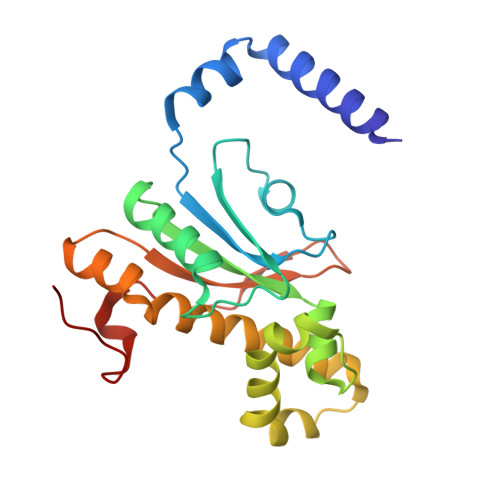Structural Mapping of Anion Inhibitors to beta-Carbonic Anhydrase psCA3 from Pseudomonas aeruginosa.
Murray, A.B., Aggarwal, M., Pinard, M., Vullo, D., Patrauchan, M., Supuran, C.T., McKenna, R.(2018) ChemMedChem 13: 2024-2029
- PubMed: 30088334
- DOI: https://doi.org/10.1002/cmdc.201800375
- Primary Citation of Related Structures:
6D2J, 6D2M, 6D2N, 6D2O - PubMed Abstract:
Pseudomonas aeruginosa is a Gram-negative facultative anaerobe belonging to the Pseudomonadaceae family. It is a multidrug-resistant opportunistic human pathogen, a common cause of life-threatening nosocomial infections, and a key bacterial agent in cystic fibrosis and endocarditis. The bacterium exhibits intrinsic resistance to most antibacterial agents, including aminoglycosides and quinolones. Hence, the identification of new drug targets for P. aeruginosa is ongoing. PsCA3 is a β-class carbonic anhydrase (β-CA) that catalyzes the reversible hydration of carbon dioxide to bicarbonate and represents a new class of antimicrobial target. Previously, inhibitor screening studies of psCA3 have shown that a series of small anions including sulfamide (SFN), imidazole (IMD), and 4-methylimidazole (4MI), and thiocyanate (SCN) inhibit the enzyme with efficiencies in the micro- to millimolar range. Herein the X-ray crystal structures of these inhibitors in complex with psCA3 are presented and compared with human CA II. This structural survey into the binding modes of small anions forms the foundation for the development of inhibitors against β-CAs and more selective inhibitors against P. aeruginosa.
Organizational Affiliation:
Department of Biochemistry and Molecular Biology, College of Medicine, University of Florida, Gainesville, FL, 32610, USA.
















